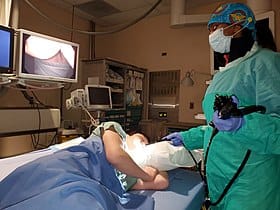Our Endoscopic Ultrasound (EUS) FAQ section addresses common questions regarding the procedure, including its purpose, how it is performed, and what to expect before and after the test. We provide clear and concise information to help you understand the benefits and potential risks of EUS, along with insights into preparation and recovery. Whether you are considering EUS for diagnostic purposes or therapeutic intervention, this guide is designed to help you feel informed and confident in your healthcare decisions.




